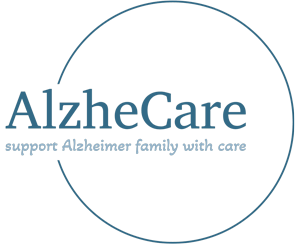When my grandmother’s Alzheimer’s diagnosis became clear, we found ourselves facing a journey with many unknowns. Understanding the progression of the disease became crucial for our family’s ability to provide care and maintain our emotional well-being.
Understanding Disease Progression and Care Strategies

Walking the Path:
Our Family's Guide to Alzheimer's Progression
The Stages We've Experienced
Early Stage:
Initially, Mom maintained her independence but needed help with complex tasks
- Memory lapses became more frequent, particularly with recent events
- She struggled with financial management and planning
- We noticed increasing difficulty with time management
Middle Stage:
- Daily activities required more assistance
- Communication became challenging as word-finding difficulties increased
- Sleep patterns changed significantly
- Emotional responses became more unpredictable
Late Stage:
- Full-time care became necessary
- Physical assistance with basic activities increased
- Communication shifted primarily to non-verbal cues
- We focused on comfort and maintaining dignity

Managing Behavioral Changes
One of the most challenging aspects has been understanding and responding to behavioral changes:
Wandering
We learned to:
- Install door alarms and security systems
- Establish daily routines to reduce anxiety
- Create safe walking paths within the house
- Use identification bracelets
- Register with local safety programs
Sleep Disturbances
Our approach includes:
- Maintaining consistent bedtime routines
- Limiting daytime napping
- Creating a calm sleep environment
- Managing evening activities to prevent sundowning
- Working with doctors to address underlying issues
Incontinence Management
We developed strategies for:
- Establishing regular bathroom schedules
- Making bathroom access easier with clear signage
- Using appropriate products for comfort and dignity
- Maintaining skin care and hygiene
- Adapting clothing for easier management
Communication Strategies That Work
Through trial and error, we discovered effective ways to communicate:
- Speaking slowly and clearly
- Using simple, direct sentences
- Maintaining eye contact
- Paying attention to non-verbal cues
- Avoiding arguments or corrections
- Using touch and gentle gestures when appropriate
Creating a Supportive Environment
We modified our home to:
- Remove hazards and simplify spaces
- Improve lighting throughout the house
- Install handrails and safety equipment
- Use clear labels and signs
- Create comfortable rest areas
Daily Care Routines
Establishing consistent routines helps manage:
- Personal hygiene and grooming
- Medication schedules
- Meal times and nutrition
- Physical activity and rest periods
- Social interaction and stimulation
Adapting Activities
We learned to:
- Break tasks into simple steps
- Focus on remaining abilities
- Maintain familiar activities when possible
- Introduce modifications gradually
- Celebrate small successes
